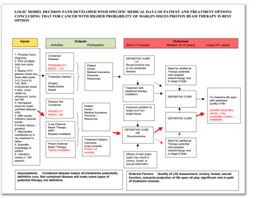
Dear Members:
A few months ago I noted in this column that my son-in-law, Deb's husband Mark, had received a terrible diagnosis. I asked for prayers from our group. Hundreds of you responded with prayers and well wishes. Many put Mark on their church prayer lists, and one of our members—a pastor with a huge congregation in the Midwest—sent a tweet to his 93,000 followers on Twitter asking for prayers, and a large number responded.

Mark completed an aggressive chemotherapy protocol recently, and his response, thus far, has been everything we could have hoped for. It certainly feels like our prayers are being answered. Only time will tell if this bounce-back will be long term.
To celebrate this milestone, we took the opportunity last month to travel as a family to Disney World in Orlando, Florida—Mark, Deb, their three-year-old daughter, Gemma, Mark's parents, my wife and I.
Our luck … we arrived just as the polar vortex dumped frigid-cold air on the entire country, including Central Florida. Despite the cold weather, rain (including a flash flood at the Magic Kingdom), long lines for both rides and unhealthy food, and overpriced everything, we had a wonderful time as a family; this proud grandfather really connected with his only grandchild; and I'd do the whole thing all over again in a heartbeat.
The opening quote talks about the difference caring people can make and we feel that the caring people in our sphere have helped bring about Mark's positive progress that even his doctor called "miraculous." Please keep Mark in your prayers. He still has a long and challenging road ahead of him.
Year end is a time of reflection. And as I reflect on the past 14 years since my own diagnosis and treatment at Loma Linda, and the formation of the Brotherhood of the Balloon, I find it incomprehensible that our group even exists, much less has grown to more than 7,300 members in 39 countries.
Our stated mission is to 1) provide support, 2) promote proton therapy, and 3) give back. We have done very well in all three categories. I'm especially proud of the fact that hundreds, if not thousands of men have chosen proton therapy through our efforts and influence. One gentleman told me, "I chose proton therapy because it's the only prostate cancer treatment option with a fan club."
I'm also proud of our group for the generosity you have shown in giving back. To date, your gifts for proton therapy research total more than $11 million. And future planned gifts from our group for proton research and the comprehensive "Vision 2020 Campaign for a Whole Tomorrow" at Loma Linda University Health are shaping up to be substantial.
Our group responded magnificently this past year when another threat to the future of proton therapy surfaced. Health Care Service Corporation (HCSC) announced they were changing their policy and Blue Cross Blue Shield would no longer be reimbursing for proton therapy in five states beginning January 1, 2015. We asked for your support in a letter/email-writing campaign and you responded overwhelmingly with hundreds of thoughtful and compelling letters. As a result of this and other initiatives, HCSC has put the policy change on hold and they are reconsidering their decision. We are all making a difference. As our opening quotation states, "Never believe that a few caring people can't change the world." We are doing just that.
Thank you for your participation in our efforts and support of our important mission.
Bob Marckini
To print the BOB Tales newsletter or view the newsletter with a larger font size, click here for the PDF file.
in this issue
- Advanced MRI scans: A "game changer" in prostate cancer testing
- DNA blood test might identify status of prostate cancer
- High cholesterol linked to prostate cancer recurrence
- Johns Hopkins prostate cancer risk calculator
- BOB reunion/Albuquerque, NM
- LLUCC Booth/BOB reunion at RV tent show in Quartzsite, AZ
- Prescription NSAIDs may contribute to rectal bleeding
- Biology professor created complex logic model to research treatment options
- Raw or cooked veggies—which is better?
- Proton-related brain teaser!
membership

We have 7,315 members; we added 52 new members last month. We have members from all U.S. states and 39 countries. We recently found that we have members from Ireland, Iceland, and Norway. Members represent all operating proton centers in the U.S. as well as four proton centers in Europe and Asia.
news report
Advanced MRI Scans: A 'Game Changer' in Prostate Cancer Testing
In our August 2014 BOB Tales we wrote about an excellent new book, "Prostate Cancer Breakthroughs – 2014" by Dr. Jay Cohen. A major focus of this book was new imaging developments that significantly improved the physician's ability to determine the location and aggressiveness of tumors in the prostate.
Most prostate biopsies today are what he refers to as "blind biopsies." The prostate is sampled anywhere from eight to 25 times, typically using nothing more than an ultrasound image to guide the needle. The samples are, for all practical purposes, random.
New imaging technologies are being developed that can significantly improve the process for finding prostate cancer prior to the initial biopsy as well as determining the exact location of cancer when there has been a recurrence.
Two recent articles have shed light on these latest important developments in prostate cancer detection. One was an ABC News article titled "MRI Scans Could be a 'Game Changer' in Prostate Cancer Testing;" and the other, "Researcher Makes Case for MRI Use in Prostate Biopsies?Technique Identifies More High-Grade, Aggressive Cancers."
Many patients have invasive, and sometimes painful prostate biopsies, only to learn there is no cancer present. Some may have multiple negative biopsies. And it's not uncommon for biopsies to miss the cancer, or to find early stage lesions and miss more aggressive cancers in the prostate. The use of high-resolution MRI is shedding new light—literally and figuratively—on this issue.
The benefit to using MRI scans, particularly the more precise 3-Tesla mpMRI scans, is significant. In many cases, biopsies can be avoided when no suspicious areas are found by MRI. With more precise imaging, biopsies can be targeted to specific areas within the prostate, helping doctors find and assess the severity of the cancer (if it's there).
If an unnecessary biopsy can be avoided, it saves cost and helps the patient avoid an uncomfortable experience. And since about 2 percent of biopsies result in infection, it also helps minimize biopsy side effects including infection and excessive bleeding.
Proponents of the new imaging technique say the system could help resolve some of the problems that plague doctors and prostate cancer patients, such as telling the difference between aggressive, dangerous cancers and clinically insignificant ones that might not need treatment.
These more precise imaging techniques are also being tested as a tool to help improve certain treatments for prostate cancer, especially focal therapy targeted at a specific tumor within the prostate.
"Data so far suggests that using MRI-guided biopsies allows doctors to identify a larger percentage of high-grade, aggressive cancer than using conventional biopsies, potentially saving lives," said Dr. Samir Taneja, co-director of the Smilow Comprehensive Prostate Cancer Center at NYU. If the MRI misses a tumor, according to Dr. Taneja, it's usually small, low-grade cancers.
We will be hearing much more about these advanced imaging technologies in the future and will keep you posted as the technology advances.
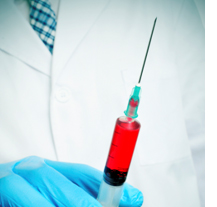
DNA Blood Test Might Identify Status of Prostate Cancer
A new study by the Institute of Cancer Research (ICR) in London suggests that a blood test that measures DNA from a prostate cancer tumor could help doctors better assess the state of a man's disease. This routine test could reveal when treatment for advanced prostate cancer stops working and begins promoting tumor growth.
"In the future, we hope to routinely monitor genetic mutations in patients with advanced disease using just a blood test—enabling us to stop treatments when they become disease drivers and select the next best treatment option. We need to confirm these findings in larger numbers of patients, but using these types of blood tests could allow true personalization of treatment for prostate cancer patients, based on the cancer mutations we detect," explained the study's leader, Dr. Gerhardt Attard.
It should also be noted that using a blood test to measure circulating tumor DNA levels is less expensive and less invasive than needle biopsies.
"This research is important as it shows there might be a new way to monitor how a man's cancer is changing during treatment, and that could help us to pinpoint the stage at which some drugs stop being effective. In the future, this could arm doctors with the knowledge they need to ensure that no time is wasted between a drug that stops working for a man and him moving on to another effective treatment," said Dr. Matthew Hobbs, deputy director of research at Prostate Cancer UK. Hobbs went on to say that this is preliminary research and that the study size was small—just 16 men. Findings need to be confirmed in a larger study.
High Cholesterol Linked to Prostate Cancer Recurrence
Last month an article entitled "High Cholesterol Tied to Prostate Cancer's Return in Study" appeared on Drugs.com. The article was based on a study published October 10, 2014 in Cancer Epidemiology, Biomarkers & Prevention.
The study involved more than 800 men who had had their prostates removed surgically. Those with high levels of "bad" cholesterol (LDL) or triglycerides were more likely to have their prostate cancer return according to the study.
Men with triglyceride levels of 150 mg/dL or higher had a 35 percent increased risk of their cancer coming back, compared with men with normal triglyceride levels. Further analysis showed that higher levels of the "good cholesterol" HDL, actually benefited some men. In fact, for every 10 mg/dL increase in HDL, the risk of prostate cancer recurrence dropped by 39 percent.
Commenting on the study, Dr. Anthony D'Amico, chief of radiation oncology at Boston's Brigham and Woman's Hospital noted that, "This is a study of association, not causality," noting it doesn't prove that normal blood-fat levels prevent cancer recurrence.
Dr. Charles "Snuffy" Myers, noted expert on recurrent prostate cancer has mentioned in his monthly Prostate Forum Newsletters that he encourages his patients with high LDL cholesterol to reduce their LDL to the normal range. Dr. Myers feels that lowering LDL is an important factor in slowing disease progression after surgery or radiation. In the Volume 14 Number 1, May 2012 newsletter, he stated,
We have been successful in slowing or even arresting PSA progression in patients who have recurred after surgery or radiation. In this process, we make sure to address general health issues. We seek a systolic blood pressure below 130 mmHg, an LDL cholesterol below 100 and a blood sugar below 100. Diet and supplements do play a role in this process, but prescription drugs are also sometimes required.
Keeping blood fats, blood pressure, and blood sugars at normal levels is also good for maintaining overall good health, according to Dr. Myers.
Johns Hopkins Prostate Risk Calculator
Researchers at the University of Texas Health Sciences Center in San Antonio have developed a calculator to predict the probability of prostate cancer. This calculator was reviewed in a recent Johns Hopkins Prostate Disorders Bulletin. The calculator is based on a prostate cancer prevention trial involving 5,800 patients and it is used to help determine the risk of developing prostate cancer.
The calculator asks individuals to answer questions on race, age, PSA level, prostate cancer family history, digital rectal exam (DRE), and prior prostate biopsy.
As an example: According to the calculator, a 65-year-old Caucasian with a PSA of 7.5, no family history of prostate cancer, a normal DRE, and a past negative biopsy has a 10 percent chance of high-grade prostate cancer, a 21 percent chance of low-grade prostate cancer and a 69 percent chance that the biopsy will be negative.
An African American of similar age, PSA and family history, with an abnormal DRE has a 32 percent chance of high-grade prostate cancer, a 17 percent chance of low-grade cancer, and a 51 percent chance that the biopsy will be negative.
The calculator should never be substituted for a meeting with a doctor, but it can be used as one of many tools to help men make informed decisions and/or help generate questions that can be discussed with a doctor.
events
Proton Patient / BOB Member Reunion | Albuquerque, NM
When:
March 8, 2015, 2:00 – 5:00 p.m.
Where:
Sandia Presbyterian Church, 10704 Paseo del Norte N.E., Albuquerque, NM
Details:
Dr. Lynn Martell, D.Min, Director of Special Services at Loma Linda University Health, will discuss exciting news about Loma Linda, new clinical trials with the use of proton therapy, and detailed plans to transform the campus as part of Vision 2020. Vision 2020.
Bring your spouse. This is also an excellent opportunity to invite friends who have been diagnosed with prostate cancer. Light refreshments will be served.
More information:
Dr. Lynn Martell at [email protected] or 909-558-7756.
RV Tent Show / Loma Linda University Health Booth / BOB Reunion | Quartzsite, AZ
What:
Representatives of Loma Linda University Cancer Center, including Dr. Lynn Martell, D.Min, Director of Special Services, and Aaron Laudenslager, Senior Development Officer, will be hosting a booth for the first time at this year's 32nd Annual Sports, Vacation & RV Show in Quartzsite, Arizona. BOB member and RV enthusiast, Vern Haase of Omak, WA, has volunteered to help man the booth and is looking for other BOB members to volunteer, or simply attend the event and reunite with other proton patients and their families.
When and Where:
January 17 through 25, 2015 from 9:00 a.m. to 5:00 p.m., daily at 700 S. Central, Quartzsite, AZ 85346.
Want to help?
"Team Proton"—Dr. Martell, Aaron Laudenslager, and Vern Haase, are looking for volunteers to help man the booth and pass out information about proton therapy to attendees. Interested parties can call Vern Haase at 509-826-4931 or email [email protected].
Details:
- Free admission
- 20-acre facility
- free parking
- 69,000 sq. ft. fully carpeted indoor exhibit area
- midway (outside) RV live-aboard exhibit area
- walking distance to major rock and gem shows.
National Proton Conference | 2015

Registration is open for the 3rd Annual National Proton Conference—Creating a Better Future for Cancer Patients Worldwide. The event takes place in Washington, D.C., March 30 through April 2, 2015. More information will follow.
spotlight on members
In Memoriam: Ed Holland
Connie Holland notified us that her husband, Ed Holland, passed away recently from lung cancer. Ed was a retired firefighter and was treated at Loma Linda University Cancer Center's Proton Treatment Center in 2001. When Ed was diagnosed, he wanted to find a treatment option other than surgery as his brother chose that route and it left him with many unpleasant side effects.
Ed once said to us that his proton treatment at LLUCC proved the statement, "No pain, no gain" to be a myth. In his testimonial, he wrote about the fun he and Connie had while he was in treatment, the whole-person care he received, and the fond memories he had of the Wednesday night meetings … "very informative, while being a great way to laugh away any stress you might have." He also said, "I can only say that what could have been a very trying time in my life was one of the most rewarding experiences I could have had. In addition, I have made some very special and lasting friendships."
Ed and Connie have long been strong supporters of proton therapy for prostate cancer and have been active in supporting our efforts in many ways. Connie has volunteered hundreds of hours to help us with calling campaigns and our efforts to sponsor/communicate with members without computers and email. We recently contacted Connie to offer our condolences, prayers, and thanks for all she has done to support us. She wrote back saying:
I was always very happy to help out in any way I could as I felt proton had given us a chance for a very normal life and it did. We were very thankful during Ed's last fight that we did not have any side effects from the proton treatments to deal with and his prostate cancer had never reappeared. I would still like to continue receiving the monthly newsletter as I will always preach proton to anyone who will listen.
Member Feedback
Prescription NSAIDs May Contribute to Rectal Bleeding
Most of our members know that for a small number of patients, minor rectal bleeding can be a temporary side effect from proton treatment. Some doctors call this radiation-induced neovascularization. The bleeding is almost always minor, self-limiting, and painless. And it usually clears up on its own.
One member wrote us to report that he had been experiencing some minor rectal bleeding off and on for a few weeks, which he attributed to his proton treatment.
In doing his research and talking with his local doctor, he learned the prescription NSAID (Non-Steroidal Anti-Inflammatory Drug) medication he was taking for his arthritis could be contributing to his problem. When he stopped taking the NSAID medication with his doctor's concurrence, his rectal bleeding stopped within two days.
He suggested we pass this information along to our membership. Of course you should never stop taking a prescription medication without speaking with your doctor first.
These Members Certainly 'Did Their Homework'
Biology Professor Chose Proton Therapy Based on Complex "Logic Model"
When BOB member, Eliot Herman (Tucson, AZ), was diagnosed with prostate cancer in 2012, he didn't sit back and simply heed the advice of his urologist (who recommended surgery) without first doing his homework. He went way beyond that.
Eliot developed what he calls a "logic model" to help determine which course of treatment would be best for him. As a Professor of Biology at the University of Arizona, School of Plant Sciences, Eliot was used to researching and collecting data to draw conclusions and make informed decisions. So, when he was diagnosed with prostate cancer, he did his research. He wanted to find the treatment option that would give him the best chance of survival, with a focus on preventing secondary cancers.
During Eliot's research, he thought to himself, "There must be a logical, scientific way to choose the best treatment option for my particular circumstance." And there was. Below, he explains his scientific rationale for reaching his ultimate treatment decision—proton therapy.
I decided that my treatment decision would be evidence-based and that I would not just listen to the advice of my doctor. I outlined a sequence of information and actions with corresponding decision points. The inputs were treatment options and data on my specific diagnosis and circumstances, and the outputs were a series of treatment options and the advantages and disadvantages of each.
I discovered a few things: Biopsy slide reads are somewhat subjective and after three reads, I had three different scores. In the end, I took the middle read.
The single most important data is whether the cancer penetrated the capsule. My middle 4+3 score had a significant probability that the cancer may not be contained and therefore surgery would not be definitive. To narrow this further, I had an MRI scan. The results showed an indistinct tumor border with the tumor pushing outward on the capsule explaining my overt symptoms.
This was the fork in the road. Although my doctor recommended surgery, the data showed that surgery was less likely to be the best option for me. Therefore, the more optimal path was radiation because it would cover a larger area.
My local treatment options were radioactive pellets or X-ray IMRT, but my medical literature reading already put three options, protons included, on the table. The literature indicated all three forms of radiation treatment would kill a tumor, but the collateral damage and long-term prospects differentiated these treatments.
The massive single dose of radioactive seeds compared to fractionated multiple doses of beam therapy appeared to often cause significant lasting damage to healthy tissue. The single treatment had the advantage of limited time to treat, but for me this was pennywise and dollar-foolish to value a small fraction of time so much as to adversely affect the longer term. For this reason, I shifted to beam therapy.
The medical literature was equivocal about IMRT and protons with regards to long-term cure and remission. There didn't seem to be enough data showing a large difference. However, on collateral damage, in regard my main concern—how treatment affects the bladder and bowel—there were differences that might favor protons due to tighter beam and better placement of dose on the target that derives from the physics of waves (X-rays) and charged particles (protons). This could have been enough to tip the scale, but for my model, the tie-breaker was the projection of secondary tumor rates.
All radiation produces DNA breakage and mutation including natural background radiation that, in part, drives evolution. Radiation also causes cancer, and the massive doses used to treat cancers would cause a rate of secondary cancers that could be quantified by surveying a sample population. For prostate cancer, the dominant secondary threats are bladder and colon cancer, both well exposed, and blood cancers, from irradiating the circulating blood. The medical and radiation literature indicated a roughly ten-fold higher risk from X-rays compared to protons for inducing cancers of types. Prostate cancer, and in particular IMRT or proton-specific secondary cancer rate data, wasn't available (as it will require a decade or two to run out the patients and acquire the data), so there was an element of assumption in my final decision point. As a 60-year-old cancer patient, there was enough data in my view to make an informed decision. Therefore, I chose proton therapy.
I believe in my research and my model, enough so that I paid for my own treatment after Blue Cross balked. Eighteen months later, I am at 1.0 ng PSA down from about 7.5 ng and my tumor has disappeared. It is far too early to see if my probability bet from my model for secondary cancers was the correct choice, but I remain optimistic that it is.
View Eliot's complete logic model.
This is just another example of how smart people choose protons.
Treated Ten Years Ago; Has Taken 45 Vacations; Feeling Great
In January 2004, Tom Wright, (Poulsbo, WA) was diagnosed with prostate cancer. He had a Gleason score of 4+3=7 and a PSA of 6.2. "I was seeing a urologist who wanted to remove my prostate right away," Tom said. "But I wanted to do some research of my own before I made such an important life decision."
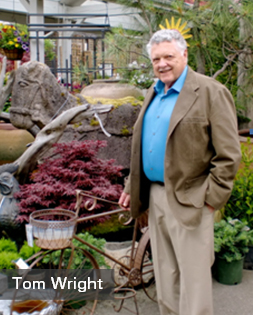
Tom read several books on the subject of prostate cancer, but was still uncertain. Soon thereafter, his son, a captain for Alaska Airlines, told him about a fellow employee who had been treated at Loma Linda University Cancer Center (LLUCC) in California. He had received proton therapy for his prostate cancer and was doing well. "My son urged me to look into proton therapy," Tom told us.
Tom contacted LLUCC a few days later. "Because I had an aggressive cancer, they set up an appointment with me right away," he said. Tom and his wife, Robbie, flew to California for a consultation a few days later. A week after that, he started treatment.
"I was a little apprehensive on the day of my first treatment," Tom said. "I didn't know what to expect, but my fears ended in a matter of minutes. In all honesty, the entire process was a breeze." During his 16 proton and 28 photon treatments, Tom played golf and visited local attractions. He also followed the advice of his LLUCC dietician and ate healthfully. Tom has not experienced any side effects.
"I'm glad I waited to make a decision. I'm glad I researched and learned about proton therapy," Tom said. "I couldn't have made a better decision. The staff at LLUCC was so kind and understanding. Every single person involved made me feel comfortable every day I was there."
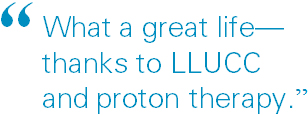
It has been 10 years since Tom completed his proton treatment. His PSA is 0.2 and he tells us he feels great; he stays active and golfs every week. Since his treatment ended, Tom and Robbie have taken 45 vacations and are already planning trips to Mexico, Hawaii, and Pennsylvania in 2015.
"What a great life—thanks to LLUCC and proton therapy," he told us.
Tom contributed a testimonial for our website. We currently have 146 member testimonials. If you are interested in telling your story, please send an email to [email protected] .
making a difference by giving back
Note from Bob Marckini
We charge no dues for membership in our group. Our members repeatedly tell us we provide considerable value to them through the various programs we have established over the years, including our website, patient testimonials, 30 patient reference lists, medical insurance support and documentation, surveys, PowerPoint presentations, response to questions/emails/phone calls and especially our comprehensive monthly newsletters with timely information about new developments in prostate cancer prevention, detection, treatment, as well as the latest developments in proton therapy for treating prostate cancer and other diseases.
If you feel these efforts have been of value to you and would like to acknowledge them in some way, I urge you to consider two things: 1) Making a year-end gift to the Loma Linda University Cancer Center for proton research or the recently launched Vision 2020 program announced a few months ago, and/or 2) Putting Loma Linda University Health in your estate plan. My wife, Pauline, and I make a gift every year and we have included Loma Linda University Health in our estate plan. This is our way of saying "thank you" for all we have received from our association with Loma Linda University Health.
If you are interested in supporting proton research, I encourage you to make a gift to the Robert J. Marckini Endowed Chair. Once funded, the interest on the principal from this chair will be used to pay for a researcher, assistant, and supplies to fund important basic and clinical proton research.
Over the past 60 years there have been particle accelerators in physics labs around the world. But it was Dr. James Slater, a physicist and radiation oncologist, who was so troubled by the side effects from conventional X-ray radiation to his patients in the 1980s that he made the bold move to spearhead a project to bring proton therapy to a hospital setting. This culminated with the opening of the first hospital-based proton treatment center in the world at Loma Linda University Cancer Center in 1990. Since that time more than 100,000 patients have been treated with protons; most of these have been cured of their cancers; and most have enjoyed excellent quality of life as a result of their proton treatment.
Because of Dr. Slater's pioneering work, there are 15 proton treatment centers in the U.S. and many more overseas. An article in Digital Journal last month reported the number of proton centers in the U.S. is expected to grow to 29 by 2018. According to the article, "This surge can be attributed to the various advantages associated with proton therapy, such as more directed impact on the tumor, increased control and reduced negative impact on healthy tissue." This is exactly what Dr. Slater believed more than 30 years ago.
You can thank Dr. Slater for his bold and breakthrough pioneering work by making a year-end gift to proton research. If you make a gift to the Marckini Chair, you can direct that the gift be made in honor of someone you would like to acknowledge, such as a family member, friend, or caregiver. A letter will be sent to the individual in whose honor you wish the gift to be made. What better way to honor someone than by making a gift to proton research in his or her name? Instructions for giving are on the following page.
How to Donate to the Marckini Chair for Proton Research
- Send a check made out to "LLUCC Proton" to Loma Linda University Health, Office of Philanthropy, P.O. Box 2000, Loma Linda, CA 92354. On the memo line write, "Marckini Chair."
- Donate online. Click the "Make a Gift" link at the far right.
- Call Elvia DeHaro at 909-558-5010.
Other Ways to Support Proton Research at LLUH
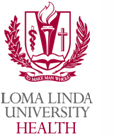
If you have questions about the various ways to support proton research efforts, please contact the Office of Philanthropy at Loma Linda University Health at 909-558-3284 or send an email to Aaron Laudenslager at [email protected].
For more information on how to support the James M. Slater, MD, Proton Treatment and Research Center through an estate gift, contact Todd Mekelburg at the Office of Planned Giving by phone at 909-558-4553, visit the website at llulegacy.org, or email [email protected].
Sequoia Foundation—Challenge Completed!
The Sequoia Foundation for Achievement in Culture and Education, founded and owned by one of our members, encouraged fellow BOB members to match a $25,000 challenge grant for the year 2014. The foundation promised to match gifts of $1,000 or more to the Robert J. Marckini Chair up to a total of $25,000. We are delighted to report that well over 25 gifts of $1,000 or more were received. Thank you to all who contributed—and a special thank you to The Sequoia Foundation for its continued support.
health
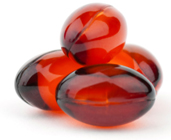
Fight Flu Season with This Vitamin
In a study done during flu season and reported on Sharecare.com, people who had higher blood levels of vitamin D were half as likely to get the nasty viral infection—or any other infection of the respiratory tract, for that matter.
Not only were the vitamin D study participants less likely to get sick compared with people who had lower levels of vitamin D, they were sick for fewer days if/when they did get hit with the bug.
Stay Clean
Washing your hands frequently and living a healthy lifestyle are still the cornerstones of flu avoidance. But it's helpful to know that a vitamin D supplement could help even more. Researchers are not entirely sure why vitamin D helps. It could be that this immune system vitamin's inflammation-suppressing powers help reduce the severity of infections.
It's also always a good idea to get vaccinated well before flu season starts.
Fact or Fiction: Raw Veggies are Healthier than Cooked Veggies

You've probably heard that cooking kills vitamins and minerals in food, but as it turns out, raw vegetables are not always better for you. A study published in The British Journal of Nutrition last year found that a group of 198 subjects who followed a strict raw food diet had normal levels of vitamin A, relatively high levels of beta-carotene, but low levels of the antioxidant, lycopene.
The Importance of Lycopene
Lycopene is a red pigment found in tomatoes and other rosy fruits such as watermelon, pink guava, red bell pepper and papaya. Several studies have linked a high intake of lycopene with a lower risk of cancer and heart attacks. In 2002, Rui Hai Liu, an associate professor of food science at Cornell University, found that cooking actually raises the amount of lycopene in tomatoes (study published in the Journal of Agriculture and Food Chemistry).
Cooking: The Good
According to Liu, cooked carrots, spinach, mushrooms, asparagus, cabbage, peppers and many other vegetables also supply more antioxidants to the body than they do when raw (boiling or steaming is best). In fact, another study showed that cooking carrots increases their level of beta-carotene. The body converts beta-carotene into vitamin A, which plays an important role in vision, reproduction, bone growth, and regulating the immune system.
Cooking: The Bad
Liu says the downside of cooking veggies is that cooking can destroy the vitamin C in them. Liu notes that the trade-off may be worth it since vitamin C is prevalent in far more fruits and vegetables than is lycopene. Among them: broccoli, oranges, cauliflower, kale and carrots. Besides, cooked vegetables retain some of their vitamin C content.
It's Complicated: Just Eat Your Veggies
Research shows that some veggies, including broccoli, are healthier raw rather than cooked because heat damages the enzyme myrosinase, which breaks down glucosinolates in broccoli into a compound known as sulforaphane. Sulforaphane might block the proliferation of and kill precancerous cells. Sulforaphane may also help fight the bacterium, Helicobacter pylori, which causes ulcers and increases a person's risk of stomach cancer.
On the other hand, indole, an organic compound, is formed when certain plants, particularly cruciferous vegetables such as broccoli, cauliflower and cabbage, are cooked. Indole helps kill precancerous cells before they turn malignant. And while boiling carrots was found to increase carotenoid levels, another study found that it leads to a total loss of polyphenols, a group of chemicals found in raw carrots. Specific polyphenols have been shown to have antioxidant properties and to reduce the risk of cardiovascular disease and cancer.
The bottom line, says Liu, is to eat your veggies and fruits no matter how they're prepared.
Series: Top 20 Most Common Health Questions (and Answers)
This summer, we began a series on the top 20 most common health questions (and answers) from Business Insider Magazine. Here is the seventh question on the list:

Can a hot tub make you sick?
Short answer: Yes. Hot tubs—especially ones in spas, hotels, and gyms—are perfect breeding grounds for germs.
The water is not hot enough to kill bacteria, but is just the right temperature to make microbes grow even faster. Even though hot tubs are treated with chlorine, the heat causes the disinfectant to break down faster than it would in regular pools.
The most common hot tub infection is pseudomonas folliculitis, which causes red, itchy bumps. A more dangerous side effect of soaking in a dirty Jacuzzi is a form of pneumonia known as Legionnaire's disease.
the book
Bob's Book: A Great Holiday Gift Idea
The holidays are here. Is there is someone special in your life that may benefit from reading "You Can Beat Prostate Cancer: And You Don't Need Surgery To Do It" by BOB founder, Bob Marckini? Do you have a son, brother, or other family member who is at higher risk for developing prostate cancer? Do you have a friend, co-worker, or acquaintance who might be interested in learning about proton therapy for prostate cancer?
Place an order on Amazon now. Or, to place a bulk order, simply send an email to [email protected] with the quantity that you desire and we'll discount your books per the chart below if you order before December 31, 2014. Remember, proceeds from book sales are used to help fund our efforts and to support proton therapy research through the Robert J. Marckini Endowed Chair.

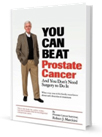
We have 206 reader reviews on Amazon—more than any other book in the top 50! Here is an excerpt from what one reader recently had to say:

The title was true for me … —Robert P. Redwine
I read this book in one sitting … I felt a real kinship with what the author, Bob Marckini, went through. Like Bob, I had watched my older brother go through surgery for prostate cancer (that is what turned me against surgery).
When I finished reading it, I knew exactly what I wanted to do. I wanted to have a "Bob" experience.
Thank goodness I was [ a candidate for proton treatment] … I spent two months having an enjoyable "Bob" experience. Almost everything Bob describes in his book was also true for me, including actually looking forward to talking with other cancer patients about my experience.
I have bought extra copies [ of Bob's book] for friends … One lady to whom I told my story at a high school reunion found out a few months later that her husband had prostate cancer. I made sure I sent a copy of Bob's book to them. She read it first and urged her husband to seriously consider proton therapy. He just finished proton therapy and had a very similar experience to what Bob describes in his book.
Here is an email written to Bob Marckini from a new member's spouse:
I have just finished my "crash" course on prostate cancer and proton therapy, thanks to your book. My husband and I would have been lost without it. Thank you. Thank you. Thank you. We've gone from being scared to death to thinking, maybe there's hope. And, you sold us on Loma Linda. Wow! Thank you again … oh so much.
Did you find Bob's book helpful?
Please help us to spread the word and educate others about proton therapy. If you found Bob's book to be helpful in making your proton treatment decision, please post a review on Amazon.
Once you are logged into your Amazon account, click here and click the "Create your own review" button. NOTE: Reviews can be just a few sentences—it only takes a few minutes. And, don't forget to rate the book from 1 to 5 stars!
Don't have an Amazon account? No problem. Sign up here—it's free.
More Information/Where to Buy the Book
- Paperback: $19.00
- Kindle: $9.99
- Nook Book: $9.99
- Apple iBook: $9.99
The paperback version of You Can Beat Prostate Cancer is available online at Amazon, Barnes & Noble, and LuLu Press. Proceeds help fund BOB efforts and support proton therapy research.
Ask about our bulk discount for hard copy books for anyone interested in spreading the word about proton therapy: [email protected]
odds & ends
Did You Know?
- More than half the coastline of the entire United States is in Alaska.
- The Amazon rainforest produces more than 20 percent of the world's oxygen supply.
- Antarctica is the only land on our planet that is not owned by any country, and 90 percent of the world's ice covers Antarctica.
- Brazil got its name from the nut … not the other way around.
- Canada has more lakes than the rest of the world combined.
on the lighter side
Last Month's Brain Teaser/Riddle
What is the longest word in the English language with only one vowel?
Answer: strengths (nine letters and only one vowel)
Winner: Member Don Miller (Collinsville, IL) was first to write in last month with the correct answer. Don was diagnosed with early stage prostate cancer in 2011, four weeks after he retired from Federal Service at age 55. Luckily for Don, a good friend had been diagnosed three weeks prior and he recommended proton therapy. He also gave Don a copy of Bob's book. Don said, "My urologist discussed options with me, but never mentioned protons. When I asked him about it, he said it was too 'new' and didn't have a demonstrated track record." Don's urologist was misinformed. Fortunately for Don, he did his own research.
A few weeks later, Don had a consultation at the IU Health Proton Therapy Center in Bloomington, Indiana. Shortly thereafter, Don decided proton therapy was the treatment he wanted. "Unfortunately my insurance provider didn't agree and denied my request claiming proton therapy was 'experimental' and 'not medically required, '" Don told us. But, after a lengthy appeals process, the denial was overturned. Don had prevailed. He started treatment in October 2011 and finished the following December right before Christmas.
Three years post treatment, Don's PSA has dropped dramatically and he feels great.
Below is a photo of Don Miller with his (home built, though he did not build it) experimental Van's RV-6A airplane. Don has had his pilot's license since 1988 and flies whenever he can to places like Myrtle Beach, Augusta, and Petit Jean State Park in Arkansas. Don has property and a boat at Bull Shoals Lake, Arkansas, and flies there many weekends each year. Don also flew to Bloomington, Indiana for his checkups at IUHPTC!
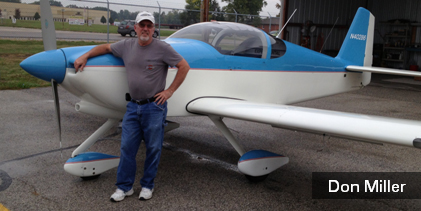
Congratulations, Don—your signed copy of Bob's book is on the way!
New Brain Teaser/Riddle
How many proton treatment centers are there around the world?
Answer next month: HINT: You may be surprised at the answer—it's more than 25. The first to send an email to [email protected] with the correct answer will receive a signed copy of Bob's book.
Do you have a favorite brain teaser or riddle? If so, send it to [email protected] and maybe we'll challenge our very intelligent members with it (giving you all the credit for sending it in, of course).
The Old Golfer
A golfer, now into his golden years, has had a lifelong ambition to play the 17th island green water hole at TPC Sawgrass exactly the way the pros do it. They drive the ball over the water and land it on the small green that is on a small spit of land. It was something the old golfer had tried hundreds of times without success. His ball had always fallen short, into the water.
Because of this failure he has not used a new ball on this particular hole for years. He always picked out one that had a cut or a nick, as did many other "average" golfers when negotiating this very challenging hole.
Recently he went to TPC Sawgrass to try again. When he came to the fateful hole, he teed up an old, cut ball as usual, and said a silent prayer. But before he could hit the ball, a powerful voice from above seemed to be booming out from the clouds, saying, "Wait! Replace that old ball with a brand-new one."
The old golfer was shocked and looked around but, didn't see anyone. So he just complied, with some slight misgivings, despite the fact that this same force seemed to be implying that he was going to finally achieve his lifelong ambition.
As he stepped up to the tee once more, the voice came down again, "Wait. Step back. Take a practice swing." So he stepped back and took a practice swing, certain now that this heavenly force was going to make his dream come true.
The voice boomed out again, "Take another practice swing." Dutifully, he did.
He stopped expectantly and waited … A long silence followed.
Then the voice again, "Use the old ball."
The Ex-wife
One evening, shortly after his honeymoon, a man was cleaning his golf shoes. His wife was standing there watching him.
After a long period of silence she finally spoke. "Honey, I've been thinking. Now that we are married I think it's time you quit golfing. Maybe you should sell your golf clubs."
Jim got this horrified look on his face. His wife asked, "Darling, what's wrong?"
"For a minute there, you were sounding like my ex-wife."
"Ex-wife!" She screamed. "I didn't know you were married before!"
"I wasn't."
Quote of the Month
"People who think they know everything
are a great annoyance to those of us who do."
—Isaac Asimov
Take Time this Christmas Season …
Mother Teresa wrote in her book "A Simple Path" of a sign on the wall of the children's home in Calcutta that reads:
Take time to think—it is the source of all power.
Take time to read—it is the fountain of wisdom.
Take time to play—it is the source of perpetual youth.
Take time to be quiet—it is the opportunity to seek God.
Take time to be aware—it is the opportunity to help others.
Take time to love and be loved—it is God's greatest gift.
Take time to laugh—it is the music of the soul.
Take time to be friendly—it is the road to happiness.
Take time to dream—it is what the future is made of.
Take time to pray—it is the greatest power on earth.
Take time to give—it is too short a day to be selfish.
Take time to work—it is the price of success.
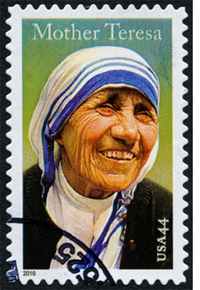
Mother Teresa's words certainly ring true in today's world.
Once again we would like to thank all who have helped us with this "ministry" this past year. To list all the names would be near impossible. But it includes our numerous volunteers, computer support people, insurance helpers, website and Internet helpers, snail-mail supporters, e-mail distributor, newsletter helpers, caregivers and administrators at all the proton centers and especially our members. Thank you all for all you do to help us grow and get our message out. We are making a difference.
We would like to wish you all a Merry Christmas, a Happy Hanukkah, and a holiday season filled with peace and joy. We hope the coming year will be overflowing with all the good things in life.
And, of course … Low PSAs to all!
Bob Marckini and Deb Hickey
You can download this month's BOB Tales in PDF format to your computer by "right-clicking" ("control-clicking" on Mac) and going to the "Save Target As… " option on the menu that pops up.
NO MEDICAL ADVICE: Material appearing here represents opinions offered by non-medically-trained laypersons. Comments shown here should NEVER be interpreted as specific medical advice and must be used only as background information when consulting with a qualified medical professional.

